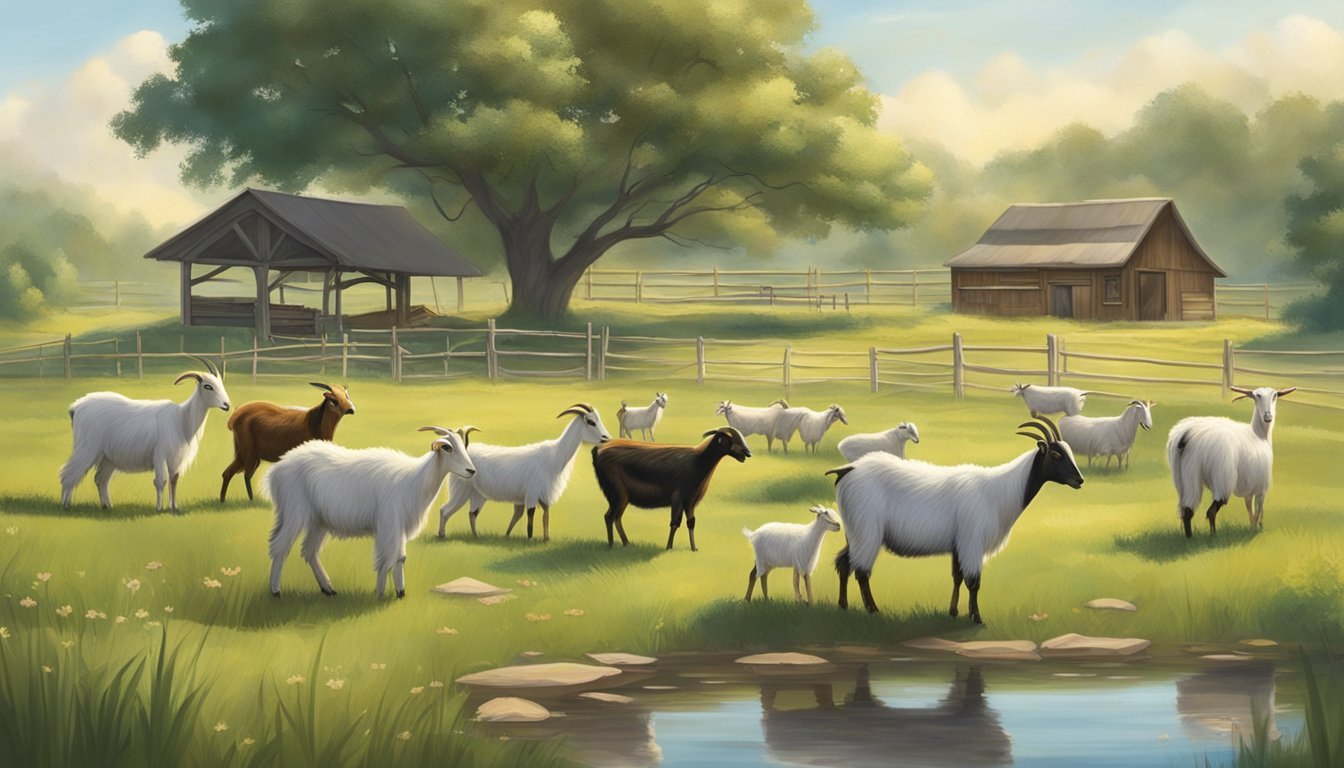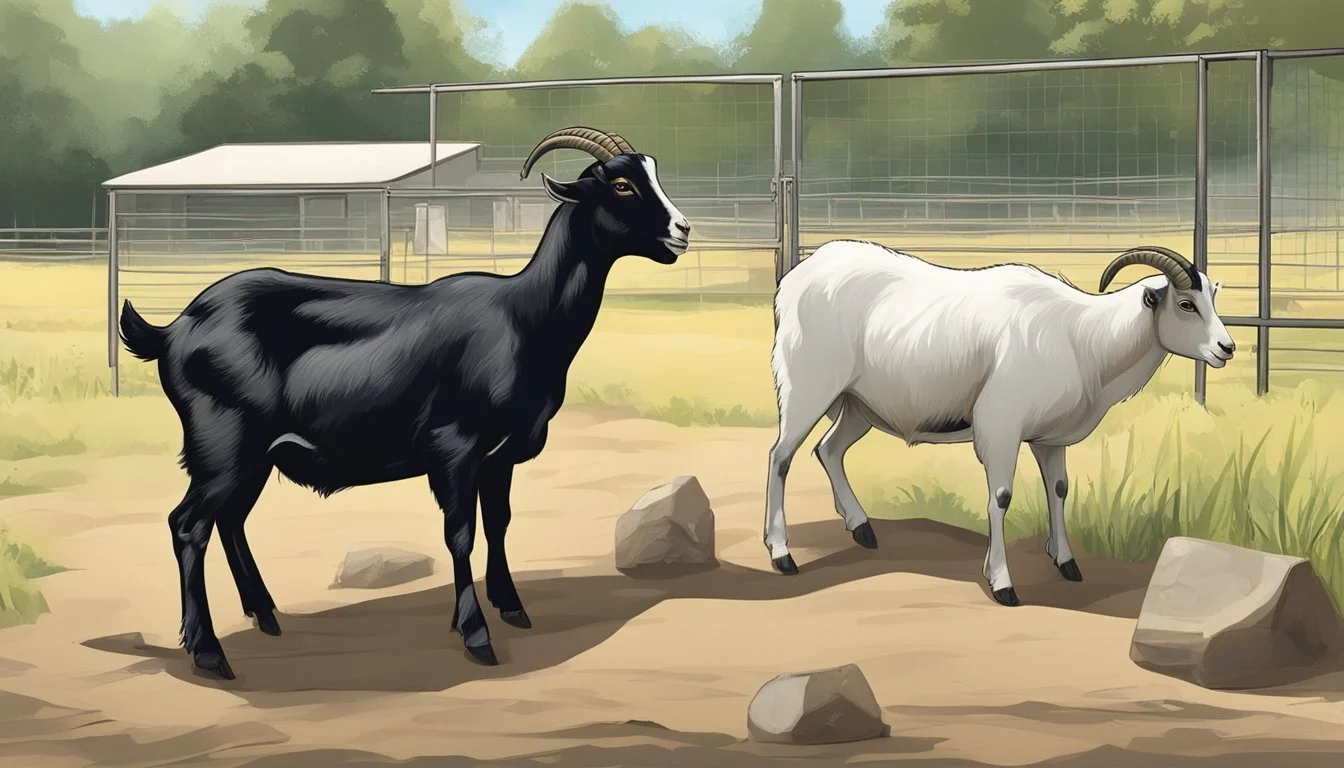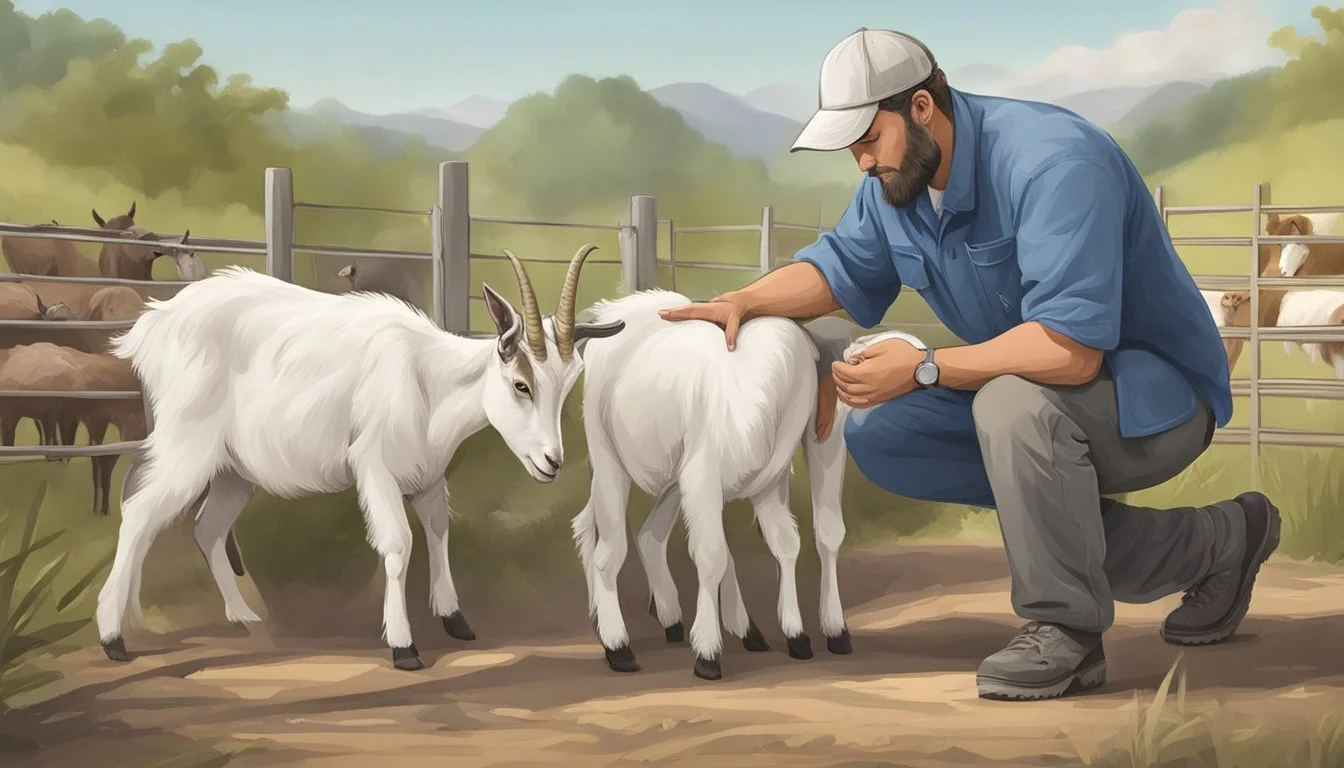How do I Handle Goat Breeding Responsibly?
Essential Tips for Ethical Farming Practices
Responsible goat breeding is a multifaceted process that involves comprehensive care, strategic planning, and a deep understanding of the goats' health and well-being. Engaging in ethical breeding practices not only enhances the quality of life for the animals but also supports the sustainability of the herd. Breeders must be prepared to address the complex needs of both bucks and does during the breeding season, pay attention to goats in heat symptoms, and ensure that their livestock are in optimal health to produce strong and healthy offspring.
Attention to detail is crucial when preparing for the breeding season. A physical assessment of the herd should be conducted one to two months in advance to evaluate body condition and address any health concerns prior to mating. Breeders should also be well-versed in the reproductive cycles and behaviors of goats to make informed decisions about pairing and to manage the herd effectively during this period.
Moreover, knowledge of proper nutrition and potential supplementation is paramount for the health of the breeding stock and for the future kids. Providing the necessary minerals and a balanced diet can greatly influence successful breeding outcomes. Breeders need to be equipped with the right supplies for the season, understand the importance of deworming schedules, and be prepared for the care of does post-breeding to ensure the success and continuation of their goat breeding endeavors.
Understanding Goat Breeding Basics
When it comes to goat breeding, it is imperative to understand the breeding season, how to recognize estrus and rut behaviors, and the specifics of goat reproduction and gestation. Knowledge in these areas ensures a responsible and successful breeding program.
The Goat Breeding Season
Seasonal breeders typically are majority of goat breeds. The goat breeding season usually falls between early fall and late winter, with some variations depending on the breed. For instance, breeds such as Nigerian Dwarf, Boers, and Pygmies may exhibit prolonged or slightly different breeding seasons. During this time, does (female goats) cycle every 18 to 21 days, which is an opportune time for breeding.
Recognizing Estrus and Rut in Goats
Identifying when a doe is in estrus (heat) is crucial for timely breeding. Signs of estrus may include restlessness, vocalizing more than usual, tail flagging, and a swollen vulva. Bucks (male goats) will display signs of rut—a condition of sexual arousal and increased activity. A buck in rut may exhibit behaviors like frequent urination, snorting, spitting, and showing increased interest in does.
Goat Reproduction and Gestation
Ovulation in does typically occurs approximately 24 hours after the onset of estrus. After successful mating, gestation in goats lasts about 150 days, leading to birthing, known as kidding. Proper management during the gestation period is important to ensure the health of both the doe and the future kids. It's vital to track the breeding dates to provide appropriate care before kidding.
Preparing for Breeding
Responsible breeding begins with rigorous preparation focused on optimizing the health and condition of the goats. Proper steps in this phase significantly impact the success of the mating process and the health of future kids.
Optimizing Goat Health Prior to Breeding
Ensuring goats are healthy before breeding is crucial. This includes a thorough deworming protocol and up-to-date vaccinations. Providing a copper bolus and selenium supplements may be necessary, depending on the region's soil content and dietary deficiencies. Proactive health care minimizes the risk of complications during pregnancy and delivery.
The Importance of Body Condition Scoring
Evaluating a doe's body condition critically informs breeding readiness. A Body Condition Score (BCS) ranging from 3 to 3.5 is ideal for does, as it is indicative of good health without being overweight, which can lead to breeding difficulties. Scoring involves assessing fat and muscle at key points on the goat's body.
Supplementing Nutrition: Flushing
Flushing is the process of increasing a doe's caloric intake before and during breeding, which can boost ovulation rates. This technique involves supplementing their diet with additional feed, typically grains or concentrate, to provide an energy surplus. Increasing the doe's nutrition supports better conception rates and can lead to multiple births.
Selecting and Managing Breeding Stock
Responsible goat breeding begins with the careful selection and management of breeding stock. The success of a breeding program hinges on choosing the right buck and doe, understanding breed standards and conformation, and conducting thorough health checks and blood testing.
Choosing the Right Buck and Doe
When selecting a buck and doe for breeding, it is imperative to consider their body condition score, which should ideally be between 2.5 and 4.0 on a 5-point scale. The buck should display vigor and good health, as he will heavily influence the offspring. Likewise, the doe should be of optimal age and health, showing no signs of complications from previous pregnancies.
Understanding Breed Standards and Conformation
The breeding goats must adhere to specific breed standards, which provide benchmarks for physical characteristics such as size, shape, and features. Conformation, or the animal's body structure and stance, plays a critical role in both its capacity to reproduce successfully and the overall health of future generations. Breeders must be well-versed in these standards to make informed decisions.
Health Checks and Blood Testing
Conducting health checks and blood tests is non-negotiable to ensure that the breeding stock does not carry transmissible diseases that could affect the herd. Blood tests should be performed to check for common conditions such as CAE, CL, and Johne’s disease. Regular fecal exams also help in managing parasites, which can impact the animals' health and reproductive efficacy.
Breeding Methods and Strategies
Responsible goat breeding involves choosing the appropriate method and developing a strategic plan tailored to the herd's needs. The success of a breeding program hinges on understanding the intricacies of each breeding method and its implementation.
Natural Mating Procedures
Natural mating is a common method that relies on the buck effect, which is the natural response of does to the presence of a buck, often stimulating estrus (heat) in does. In natural mating, timing is critical; does should be introduced to the buck when they show signs of being in heat, which occurs every 18 to 21 days. Physical presence and behavioral cues from the buck can induce ovulation, maximizing the chances of successful mating.
Utilizing Artificial Insemination
Artificial insemination (AI) offers more control over the genetic makeup of the offspring and can prevent the spread of diseases. The process requires careful timing to coincide with the doe's estrus cycle and often necessitates the doe to be in optimal health and body condition to increase success rates. While AI requires more expertise and can be labor-intensive, it allows breeders to introduce new genetics without having to maintain a buck.
Planning a Breeding Program
Developing a breeding program requires careful consideration of the goals, such as improving milk production or meat quality. It should factor in the doe’s health, the timing of breeding to align with optimal market times, and the maintenance of genetic diversity. Record-keeping is essential to track genetic lines and reproductive success. A strategic program will manage the breeding of does to optimize kid production and herd improvement.
Monitoring and Care During Gestation
Responsible breeding of goats necessitates diligent monitoring and care during the gestation period to ensure the health of the does and the successful development of the fetuses. This section delineates how to identify signs of pregnancy, the nutritional needs and health care required for pregnant does, and the essential steps in preparing for kidding.
Identifying Signs of Pregnancy
To confirm pregnancy, one may observe behavioral changes and physical signs in the doe, or utilize diagnostic methods such as ultrasonography, which is optimal for counting fetuses between 40-70 days after breeding. Signs of a successful breeding can include a cessation of cycling and a more tranquil demeanor. It is also possible to notice abdominal enlargement as the pregnancy progresses.
Nutritional Needs and Health Care of Pregnate Does
During gestation, the nutritional requirements of does increase significantly. They require a balanced diet rich in energy, protein, vitamins, and minerals, particularly during the later stages of gestation to prevent conditions such as pregnancy toxemia. Regular health check-ups and vaccinations are critical to protect against common diseases and ensure overall well-being.
Dietary Focus:
Energy: Critical for the last trimester when fetal growth is rapid.
Protein: Supports tissue growth and milk production preparation.
Minerals: Calcium and phosphorus are essential for kidding and lactation.
Health Maintenance:
Vaccinations: Up-to-date to prevent transmissible diseases to the kids.
Parasite control: Routine checks and treatments if necessary.
Preparing for Kidding
As parturition approaches, it is imperative to prepare a clean, warm, and quiet kidding area. This environment contributes to a stress-free kidding process and a healthy start for the newborn kids. Essential supplies should include clean towels, iodine for disinfecting the umbilical cords, and a kidding kit equipped for potential emergencies during delivery.
Post-Breeding Management
After goats have been bred, careful management is crucial to ensure the health of the doe and the success of the upcoming birth. Vigilance in health and nutrition, thorough record-keeping, and farsighted market planning lay the foundation for a thriving breeding operation.
Post-Breeding Health and Nutrition
Health monitoring: Following breeding, does should be watched closely for any signs of illness or distress. This includes maintaining a vigilant eye for common post-breeding issues such as miscarriages or infections. Nutrition is another cornerstone, with a focus on providing a balanced diet that supports both the does and the developing kids. For dairy goats, this means ensuring adequate energy intake to maintain milk production as well as fetal growth.
Record Keeping and Evaluation
Effective management practices necessitate meticulous record-keeping. It’s essential to track breeding dates to predict kidding and organize evaluations of offspring to improve the breeding stock. Keeping records of pedigree and performance allows for informed decisions that can affect the genetics of meat and dairy goats for years to come.
Marketing and Economics of Breeding
Decisions in marketing and economics must be made with an understanding of the breeding cycle's impact on supply and demand. For meat goats, market trends can dictate optimal times for selling kids, whereas for dairy goats, breeding schedules should align with milk production demands. A detailed analysis of the costs associated with breeding, such as veterinary care and feed, against potential income is essential to the financial viability of the operation.
Advanced Breeding Techniques
Goat breeding programs aiming for improvements in herd quality utilize advanced breeding techniques. Such techniques encompass genetic selection, crossbreeding strategies, and the use of modern technologies, which can significantly enhance production traits and herd health.
Genetic Improvement and Selective Breeding
Selective breeding in goats involves choosing individuals with desirable traits for reproduction to gradually enhance those traits within the herd. For instance, among Nubians, which are noted for their high-quality milk, breeders might prioritize does and bucks that exhibit superior milk production. This selective pressure increases the frequency of favorable genes over generations. Additionally, instruments like a breeding harness can aid in identifying which goats are mating, thus ensuring the right match-ups based on genetic goals.
Crossbreeding and Its Benefits
Crossbreeding combines different breeds, such as a Nubian with a breed known for meat production, to capitalize on the strengths of both. This method can enhance genetic diversity and bring forth hybrid vigor -- offspring that outperform their parents in specific aspects like growth rates, fertility, and resilience to disease. The crossbreeding can be done systematically to maintain a beneficial genetic mix within the herd.
Tools and Technologies in Goat Breeding
Modern tools and technologies have provided goat breeders with advanced options. Artificial Insemination (AI) allows for the introduction of genetic material from superior bucks without the need for physical presence, thus widening the genetic pool accessible to breeders. This can be particularly beneficial for genetic improvement programs. Additionally, a marking harness is a practical tool for breeders to track breeding activities, ensuring accurate records are kept for assessing the efficacy of breeding strategies.
Ethical Considerations and Welfare
To responsibly handle goat breeding, one must prioritize both the physical and psychological well-being of the goats. Integrating ethical considerations into breeding practices ensures the sustainability of the herd and the welfare of individual animals.
Ensuring Animal Welfare in Breeding Practices
Breeding practices should foster the health and happiness of goats. Animal welfare is at the forefront, encompassing ample living space, proper nutrition, and access to veterinary care. Breeders must avoid inbreeding, which can lead to genetic disorders, and instead maintain diverse and healthy gene pools. Providing environmental enrichment and implementing gentle milking practices can alleviate stress and promote the wellbeing of dairy goats.
Ethical Breeding and Its Impact
Ethical breeding extends beyond physical traits to consider the natural behaviors and longevity of goats. It involves selecting for traits that do not compromise the animals' welfare, such as good mothering capabilities and resistance to local diseases. According to research, ethical breeding practices not only preserve genetic resources but also support the health and welfare of the species. They can lead to goats that are well-adapted to their environment and capable of living content, productive lives without excessive human intervention.
Conclusion
Responsible goat breeding is imperative for the health and well-being of both does and bucks. Breeders should ensure that the goats are of optimal health and body condition, targeting a score of 3 to 3.5 for the does. Proper nutrition and care lead up to the breeding season are crucial foundations to successful breeding outcomes.
Physical examinations, along with understanding and managing the reproductive cycles of the goats, are key responsibilities. Bucks may be able to breed at a young age, but waiting until they are more mature can result in better breeding success. One must also decide between natural mating and artificial insemination, weighing the advantages of labor and expertise required for both.
Breeding season should be carefully planned, considering both the environment and the availability of resources to support pregnant does and future kids. After breeding, monitoring for pregnancy and preparing for kidding are vital steps in continuing the cycle of responsible husbandry.
Lastly, it is essential to record and evaluate the outcomes of breeding programs to ensure continual improvement in genetic quality, herd health, and productivity. Breeders should remain up-to-date on best practices in goat husbandry and always be willing to adapt their approaches as they gain further insight into responsible goat breeding techniques.






